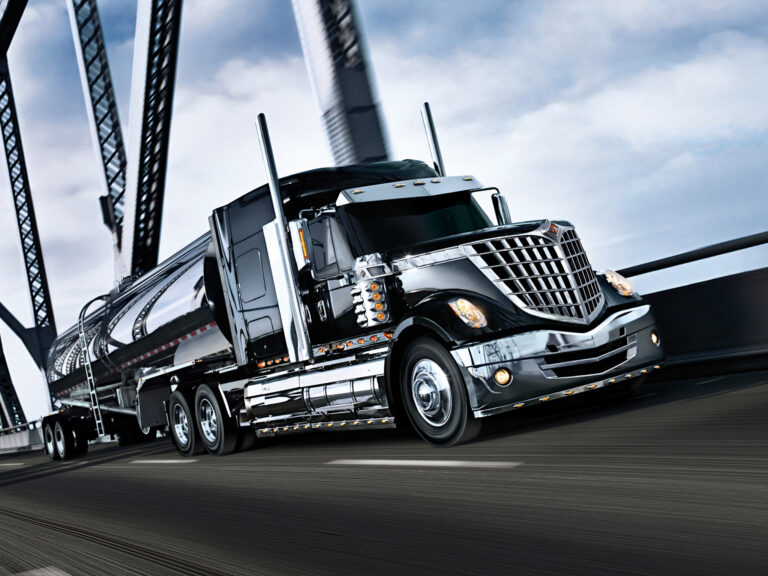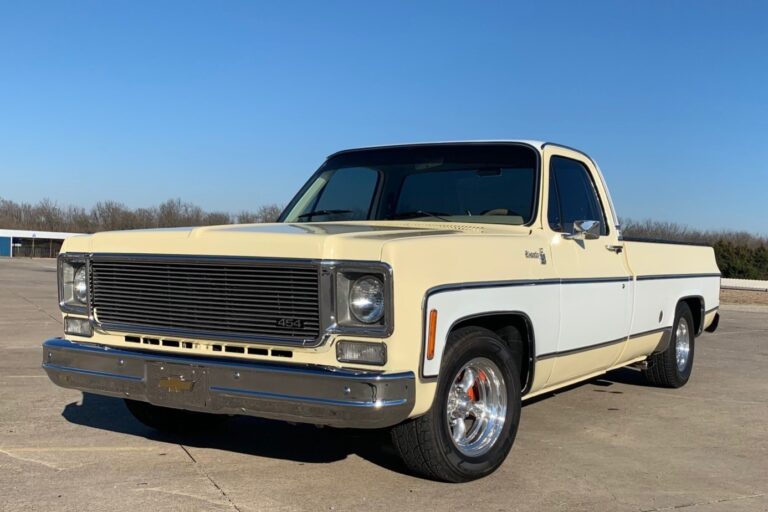Interior Dimensions: The Unsung Hero of Box Truck Efficiency
Interior Dimensions: The Unsung Hero of Box Truck Efficiency cars.truckstrend.com
In the bustling world of logistics, moving, and delivery, the box truck stands as a versatile workhorse. From small businesses transporting goods to families relocating across states, these enclosed vehicles are indispensable. Yet, beneath the obvious considerations of engine size or fuel efficiency lies a critical, often underestimated factor: Interior Dimensions. Far more than just a set of numbers, understanding a box truck’s interior dimensions is the linchpin of successful, cost-effective, and safe transportation. It dictates what you can move, how efficiently you can pack it, and ultimately, the success of your operation.
This comprehensive guide will delve deep into the nuances of interior dimensions, transforming this seemingly simple concept into a powerful tool for anyone utilizing a box truck. We’ll explore why these measurements matter, how to master them, and how they can save you time, money, and headaches.
Interior Dimensions: The Unsung Hero of Box Truck Efficiency
Understanding the Core: What Are Interior Dimensions of a Box Truck?
At its heart, "interior dimensions" refers to the usable cargo space within the enclosed box of the truck. These measurements are typically expressed in three primary figures:
- Length: The distance from the front wall (behind the cab) to the inside of the closed rear door.
- Width: The distance from one interior side wall to the other.
- Height: The vertical distance from the floor to the ceiling.
However, it’s crucial to understand that these headline figures don’t always tell the whole story of usable space. Factors like wheel wells, the rear door opening, and even the bulkhead design can significantly impact how much and what type of cargo you can truly fit.

Key Interior Dimensions to Master
To truly optimize your box truck usage, you need to look beyond the basic length, width, and height:
- Usable Length: While a truck might be advertised as a "26-foot truck," this often refers to the exterior length or the length of the cargo box. The interior usable length will always be slightly less, usually by a few inches to a foot, due to the thickness of the front wall and rear door mechanisms.
- Maximum Width vs. Wheel Well Width: This is a common pitfall. The "width" measurement typically refers to the widest point inside the box. However, the presence of wheel wells protruding into the cargo area significantly reduces the usable width at floor level. Always measure the width between the wheel wells to determine the narrowest point for large items.
- Usable Height: This is the straight vertical measurement from the cargo floor to the ceiling. Ensure it accommodates your tallest items, especially if they cannot be laid down.
- Rear Door Opening Dimensions: Crucially, the rear door (whether roll-up or swing-out) rarely provides an opening as wide or as tall as the truck’s interior. Roll-up doors, in particular, have a mechanism that can reduce vertical clearance. Always measure the clear height and width of the door opening to ensure your largest items can actually get into the truck.
- Bulkhead/Cab-Over Dimensions: Many box trucks feature a "cab-over" extension, a space above the truck’s cab that protrudes into the cargo area. This can offer additional storage for lighter, smaller items, effectively increasing your cubic footage, but it has its own specific dimensions (length, width, height) and weight limitations.

Common Box Truck Sizes and Their Typical Interior Dimensions

Box trucks are categorized by their exterior length, which loosely corresponds to their interior capacity. Here’s a general guide to common sizes and their approximate interior dimensions. Note: These are averages and can vary significantly by manufacturer (e.g., Ford, GMC, Isuzu, Freightliner) and specific model year.
| Truck Size (Exterior Length) | Approx. Interior Length (Usable) | Approx. Interior Width (Max) | Approx. Interior Width (Between Wheel Wells) | Approx. Interior Height | Door Opening (Width x Height) | Common Use Cases |
|---|---|---|---|---|---|---|
| 10-foot Box Truck | 9′ 6" – 9′ 10" | 6′ 0" – 6′ 4" | 4′ 0" – 4′ 6" | 6′ 0" – 6′ 2" | 5′ 6" x 5′ 9" | Studio/1-bedroom apartment, small deliveries |
| 12-foot Box Truck | 11′ 6" – 11′ 10" | 6′ 4" – 6′ 8" | 4′ 4" – 4′ 10" | 6′ 4" – 6′ 8" | 6′ 0" x 6′ 4" | 1-bedroom apartment, medium deliveries |
| 15-foot Box Truck | 14′ 6" – 14′ 10" | 7′ 6" – 7′ 10" | 5′ 0" – 5′ 6" | 6′ 6" – 7′ 0" | 7′ 2" x 6′ 6" | 1-2 bedroom home, small business inventory |
| 16-foot Box Truck | 15′ 6" – 15′ 10" | 7′ 6" – 7′ 10" | 5′ 0" – 5′ 6" | 6′ 6" – 7′ 0" | 7′ 2" x 6′ 6" | Similar to 15ft, often with higher capacity |
| 20-foot Box Truck | 19′ 6" – 19′ 10" | 7′ 6" – 7′ 10" | 5′ 0" – 5′ 6" | 7′ 0" – 7′ 6" | 7′ 2" x 7′ 0" | 2-3 bedroom home, medium commercial freight |
| 24-foot Box Truck | 23′ 6" – 23′ 10" | 7′ 6" – 8′ 0" | 5′ 0" – 5′ 6" | 7′ 6" – 8′ 0" | 7′ 2" x 7′ 6" | Larger homes, significant commercial freight |
| 26-foot Box Truck | 25′ 6" – 25′ 10" | 7′ 6" – 8′ 0" | 5′ 0" – 5′ 6" | 7′ 6" – 8′ 0" | 7′ 2" x 7′ 6" | 3-5 bedroom home, heavy commercial use |
The Unseen Benefits: Why Knowing Your Interior Dimensions is Crucial
A deep understanding of interior dimensions offers a cascade of benefits:
- Maximizing Efficiency: The right truck size prevents wasted space or, conversely, the need for multiple trips. This translates directly to savings in fuel, time, and labor costs.
- Preventing Damage: Knowing your dimensions ensures items fit snugly without being forced, reducing the risk of scrapes, dents, or breakage during transit. It also allows for proper securing, preventing shifting.
- Cost Savings: Renting a truck that’s too large means paying for unused space. Renting one that’s too small means potential costly delays, additional trips, or even needing to rent a second truck. Accurate dimension assessment helps you choose the "just right" size.
- Safety and Compliance: Properly loaded trucks (where weight is distributed correctly within the dimensions) are safer to drive. For commercial operations, understanding cubic capacity is often linked to weight limits and legal compliance.
- Optimized Planning: With precise dimensions, you can pre-plan your load configuration, pack items strategically, and even create diagrams for efficient loading and unloading.
Practical Steps: How to Accurately Measure Your Box Truck’s Interior
Don’t rely solely on advertised figures. When renting or purchasing, take your own measurements:
- Gather Your Tools: A long, retractable tape measure (at least 25-30 feet), a notepad, a pen, and a flashlight. A laser measuring tool can be even more accurate.
- Measure Full Interior Length: Stand at the closed rear door and extend your tape measure to the very front wall of the cargo area.
- Measure Maximum Interior Width: Measure from side wall to side wall at the widest point, usually above the wheel wells.
- Measure Width Between Wheel Wells: This is critical. Measure the clear distance between the two wheel well housings.
- Measure Interior Height: Place your tape measure on the floor and extend it vertically to the ceiling. Check this in a few spots if the ceiling isn’t perfectly flat.
- Measure Rear Door Opening: Measure the clear width and height of the opening when the door is fully open. For roll-up doors, pay close attention to the mechanism at the top that might reduce clearance.
- Measure Bulkhead/Cab-Over (If Applicable): Measure its length, width, and height.
Tips for Accuracy:
- Measure multiple times to ensure consistency.
- Account for any internal ribs, insulation, or E-track systems that might slightly reduce usable space.
- If you’re loading specific items, measure them first, then find a truck that fits.
Beyond the Basics: Important Considerations for Optimal Use
While dimensions are key, other factors interact with them to determine true utility:
- Payload Capacity (Weight): A common mistake is assuming that if an item fits, it can be carried. Every box truck has a maximum payload capacity (how much weight it can safely carry). Volume doesn’t equal weight! Always check the Gross Vehicle Weight Rating (GVWR) and subtract the truck’s curb weight to find its true payload.
- Tie-Down Points and E-Track Systems: The presence and location of tie-down rings, E-track rails, or other cargo securement systems are vital. They allow you to secure your load against shifting, which is crucial for safety and preventing damage, regardless of how well items fit dimensionally.
- Floor Type: Is the floor wood, metal, or composite? Is it anti-slip? This can impact loading heavy items and general stability.
- Lighting and Ventilation: For certain cargo (e.g., plants, electronics, or live animals), internal lighting and proper ventilation or climate control systems (refrigerated units) are critical. These specialized trucks will have slightly different internal dimensions due to insulation.
- Ramp/Liftgate Clearance: If your truck has a ramp or a liftgate, ensure that its operation doesn’t impede the loading process or reduce the effective door opening dimensions.
Mastering the Load: Tips for Efficient Packing and Utilization
With a solid grasp of your truck’s interior dimensions, here’s how to pack like a pro:
- Measure Everything: Before loading, measure your largest and most cumbersome items.
- Plan Your Layout: Visualize or even sketch out how items will fit. Place heaviest items on the bottom, centered over the axles for stability.
- Utilize Vertical Space: Stack sturdy boxes or items as high as safety allows, leaving clearance for the ceiling.
- Fill Gaps: Use smaller boxes, blankets, or packing materials to fill voids and prevent items from shifting during transit.
- Protect Surfaces: Use moving blankets, furniture pads, and shrink wrap to protect items from rubbing against each other or the truck walls.
- Secure Your Load: Use straps, ropes, or E-track tie-downs to firmly secure items, especially tall or heavy ones, to prevent movement.
Navigating Challenges and Finding Solutions
Even with the best planning, challenges can arise:
- Irregularly Shaped Items: For couches, appliances, or oddly shaped furniture, measure their largest dimensions. If possible, disassemble items (e.g., table legs, bed frames) to make them more manageable.
- Tight Door Openings: If an item fits inside but not through the door, consider using furniture dollies or hand trucks to maneuver it carefully. Sometimes, tilting an item slightly can provide the necessary clearance.
- Temperature-Sensitive Goods: Standard box trucks are not insulated. For perishables or items sensitive to extreme temperatures, you’ll need to rent a refrigerated (reefer) truck, which has significantly different internal dimensions due to thick insulation.
- Overweight Loads: If your items exceed the truck’s payload capacity, you must lighten the load or use a larger truck. Overloading is extremely dangerous and illegal.
Price Table: Typical Box Truck Rental & Purchase Costs by Size
Understanding interior dimensions helps in selecting the right truck, which in turn impacts cost. Here’s an estimated price table for common box truck sizes. Please note that these prices are highly variable based on location, rental company (U-Haul, Penske, Budget, Ryder), time of year, demand, truck age, and whether it’s a local or one-way move. Purchase prices vary greatly by new vs. used, mileage, condition, and specific features.
| Truck Size (Exterior Length) | Approx. Interior Dimensions (LxWxH) | Avg. Daily Rental (Local Move) | Avg. One-Way Rental (Base + Mileage) | Avg. Purchase Price (Used Range) | Avg. Purchase Price (New Range) |
|---|---|---|---|---|---|
| 10-foot Box Truck | 9’8" x 6’2" x 6’0" | $19.95 – $29.95 + mileage | $199 – $500 + mileage | $8,000 – $25,000 | $35,000 – $55,000 |
| 15-foot Box Truck | 14’8" x 7’8" x 6’8" | $29.95 – $39.95 + mileage | $299 – $800 + mileage | $12,000 – $35,000 | $45,000 – $70,000 |
| 20-foot Box Truck | 19’8" x 7’8" x 7’2" | $39.95 – $49.95 + mileage | $399 – $1,200 + mileage | $15,000 – $45,000 | $55,000 – $85,000 |
| 26-foot Box Truck | 25’8" x 7’8" x 7’10" | $49.95 – $59.95 + mileage | $499 – $1,500 + mileage | $20,000 – $60,000 | $65,000 – $100,000+ |
Disclaimer: Prices are estimates only and subject to change. Always obtain direct quotes from providers.
Frequently Asked Questions (FAQ)
Q1: How do I know what size box truck I need?
A1: Start by making an inventory of all items you need to move, paying special attention to the largest and most awkwardly shaped pieces (e.g., sofas, refrigerators, king-size mattresses). Measure their length, width, and height. Then, compare these measurements to the typical interior dimensions and door openings of various truck sizes. It’s often better to slightly overestimate than to underestimate.
Q2: Are interior dimensions standard across all brands (e.g., U-Haul, Penske, Budget)?
A2: No, they are not. While general size categories (e.g., 15-foot, 26-foot) are common, the exact interior dimensions can vary significantly between manufacturers and even models within the same brand. Always check the specific truck’s dimensions or measure it yourself if possible.
Q3: What’s the difference between "truck length" and "usable interior length"?
A3: "Truck length" often refers to the exterior length of the cargo box. "Usable interior length" is the actual clear space inside from the front wall to the closed rear door, which is typically a few inches to a foot less than the advertised exterior length.
Q4: Do wheel wells significantly reduce usable space?
A4: Absolutely. Wheel wells protrude into the cargo area, significantly reducing the usable width at floor level. While you might have 7-8 feet of width above the wheel wells, you might only have 4-5.5 feet between them. This is crucial for items that must sit flat on the floor.
Q5: Can I exceed the truck’s stated weight capacity if there’s still room inside?
A5: No, never. Exceeding the truck’s payload capacity (GVWR minus curb weight) is extremely dangerous, illegal, and can lead to mechanical failure, loss of control, and severe accidents. Always prioritize weight limits over available volume.
Q6: How important are door opening dimensions?
A6: Extremely important! An item might fit perfectly inside the truck, but if it can’t get through the rear door opening, it’s useless. Always measure the door’s clear height and width, especially for tall or wide items.
Conclusion
The interior dimensions of a box truck are not merely specifications; they are the blueprint for successful transportation. From selecting the right vehicle and planning your load to ensuring the safety of your goods and crew, a thorough understanding of these measurements empowers you to make informed decisions. By taking the time to measure, plan, and consider all relevant factors, you transform a potentially stressful task into an efficient, cost-effective, and safe operation. Remember, it’s not just about getting things in the truck, but getting them in safely, efficiently, and without damage.




